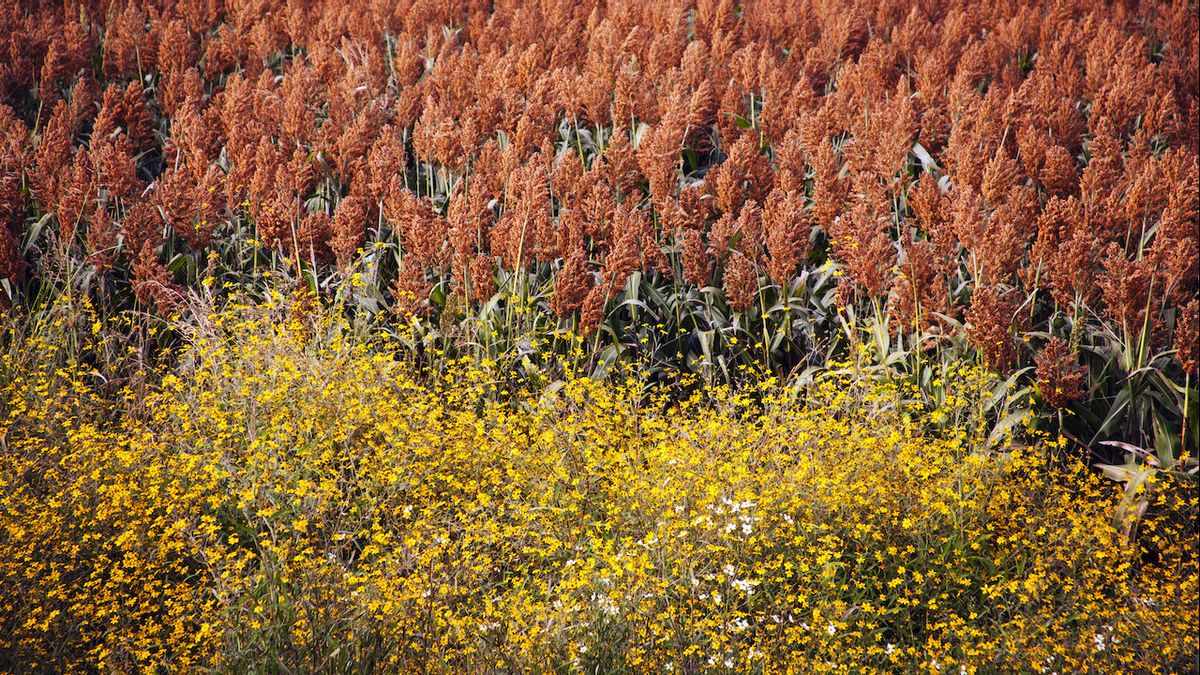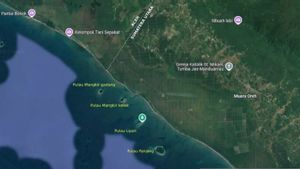JAKARTA - "The people of Central Java (know) how to manage cassava leaves. The people of West Kalimantan (understand) how to manage genjer leaves. For the people of West Java (proficient) how to manage corn. "
That is the message of the memo from the Minister of Agriculture, Brigadier General Dr. Aziz Saleh to his subordinate, the Secretary General of Agriculture. The message followed President Soekarno's wish to compile the book Mustika Rasa (1967), a book containing a collection of recipes from all corners of the archipelago to introduce food other than rice. Sorghum was introduced.
In a piece of the message, Saleh hopes that the book will exist so that there will be an exchange of food recipes so that it can lead to a new habit of eating outside of familiar foodstuffs. So it's ironic, because the leaders of other countries have never continued Saleh's spirit. Even until the latest government under Joko Widodo (Jokowi).
The country's leaders are more eager to uniform staple foods by opening large-scale rice fields to produce rice. Fortunately, thanks to advances in science and technology, an alternative to sorghum as a healthier rice food has emerged.
Asa sorghum as a food alternative has grown from small discussion podiums to big discussions. This is all thanks to the 'recalcitrant' durability of these food alternatives in dry areas, especially in uncertain weather such as in Indonesia.

Sorghum spread
Sorghum in the form of coarse grain sticks to the poor's food. Even so, history records sorghum as the fifth source of food in the world, right under the wheat, corn, rice, and barley. Apart from the archipelago, sorghum has also become a foundation in countries with dry regions, especially Asia and Africa.
Historically, no one knows for sure how early sorghum was cultivated. What is clear, this plant is native to Ethopia, East Africa. In the journal published by Litbang.pertanian.go.id it is written: Sorghum is probably one of the first domesticated plants in the history of mankind because it was an important plant in the world long before the first century.
In the 10th century, its spread began to reach Bostwana, followed later on to Zambia in the 14th century and spread throughout South Africa in the 16th century. In Asia, sorghum entered via South Asia and reached China in the 13th century.
In addition, sorghum began to spread to the Americas through the slave trade around the mid-19th century. Until before 1900, sorghum cultivation began to develop on a large scale, to be precise the plains of the southern United States. In Indonesia, sorghum entered in 1925 through the Dutch East Indies Government. However, the expansion of sorghum consumption did not occur until the 1940's.
Today, thanks to its drought tolerant and quick adaptability, sorghum's popularity is starting to spread worldwide. As a result, there are already many major sorghum producing countries in the world, according to data from the FAO. Call it America, India, Mexico, China and Nigeria.
Developments in Indonesia
Sorghum has five classifications of species, from bicolor, guinea, caudatum, kafir, and durra. This is so interesting, in addition to the many names this plant has. Sorghum in the United States and Australia, durra in Africa, jowar in India, bachanta in Ethiopia, and Cantel in Java.
Quoted from the 15th edition of Respect Magazine, the early memories of Indonesians regarding cantel or sorghum can be seen from the experiences of farmers around Central Java and Yogyakarta in the past. At that time, they recognized sorghum as a plant with a function as a buffer around the rice fields, when the rice began to turn yellow. The goal, as a strategy so that the birds do not eat up the grains of rice.
In Buton, Southeast Sulawesi is different again. "Some parents in the area still have memories of consuming sorghum as a child. Sorghum is usually made into porridge for breakfast or as a snack which is processed as lunkhead mixed with nuts, ”he wrote.

Another advantage is that apart from the lower price of corn, sorghum is also a plant that is easy to maintain and does not require a lot of chemical fertilizers as is done for growing rice. This advantage is also the reason why sorghum is being looked at to be developed in various parts of Indonesia. Right as a step to fulfill the principles of benefit, independence and sustainability.
Regarding the benefits for the people of Indonesia, it can be seen how sorghum becomes food for humans and food for livestock. The rest, sorghum has a very high fiber content compared to rice, which is generally the staple food in the archipelago. Another benefit, sorghum seeds are industrial raw materials such as ethanol, wine, beer, syrup, glue, and paint.
In terms of self-reliance, sorghum plants are self-pollinating so that the seeds for the next season can be prepared by farmers. This also fulfills the principles of independence and sustainability. In November 2014, the Ministry of BUMN designated Prambon Village, Dagang District, Madiun Regency, East Java and several other villages in the Sumba region, East Nusa Tenggara (NTT) as the area for the development of natural sorghum. No kidding, the land prepared for sorghum cultivation reaches 15,000 hectares
Cultivation challenges
In the history of this nation, pushing for food alternatives other than rice has always been a difficult matter. Especially sorghum. Indonesia Program Manager Exclaimed, Ida Pardosi spoke about this. In his statement to VOI some time ago, he revealed that there are several factors that make alternative food, especially sorghum, difficult to survive in Indonesia.
"First, the national food policy still places rice as the main food. Second, most of the land is being eroded by other food crops. For example, in Riau and Papua it becomes oil palm. Third, people's consumption patterns have begun to change thanks to the massive promotion of rice, bread and instant noodles, "said Ida Pardosi.
When the aforementioned problems still surround the archipelago, undoubtedly the problem of food uniformity and the rush to import food from other countries still surrounds this country. For that, we must respect the diversity of food, as well as respect the diversity of Indonesia.
"We must appreciate that food sources are very diverse. Get to know and appreciate the existing food system, who produces it and in the end strengthen our food system which is increasingly vulnerable due to climate change and changes our attitude towards food in general. Eat enough, eat a variety, and don't waste food, "concluded Ida.
The English, Chinese, Japanese, Arabic, and French versions are automatically generated by the AI. So there may still be inaccuracies in translating, please always see Indonesian as our main language. (system supported by DigitalSiber.id)













